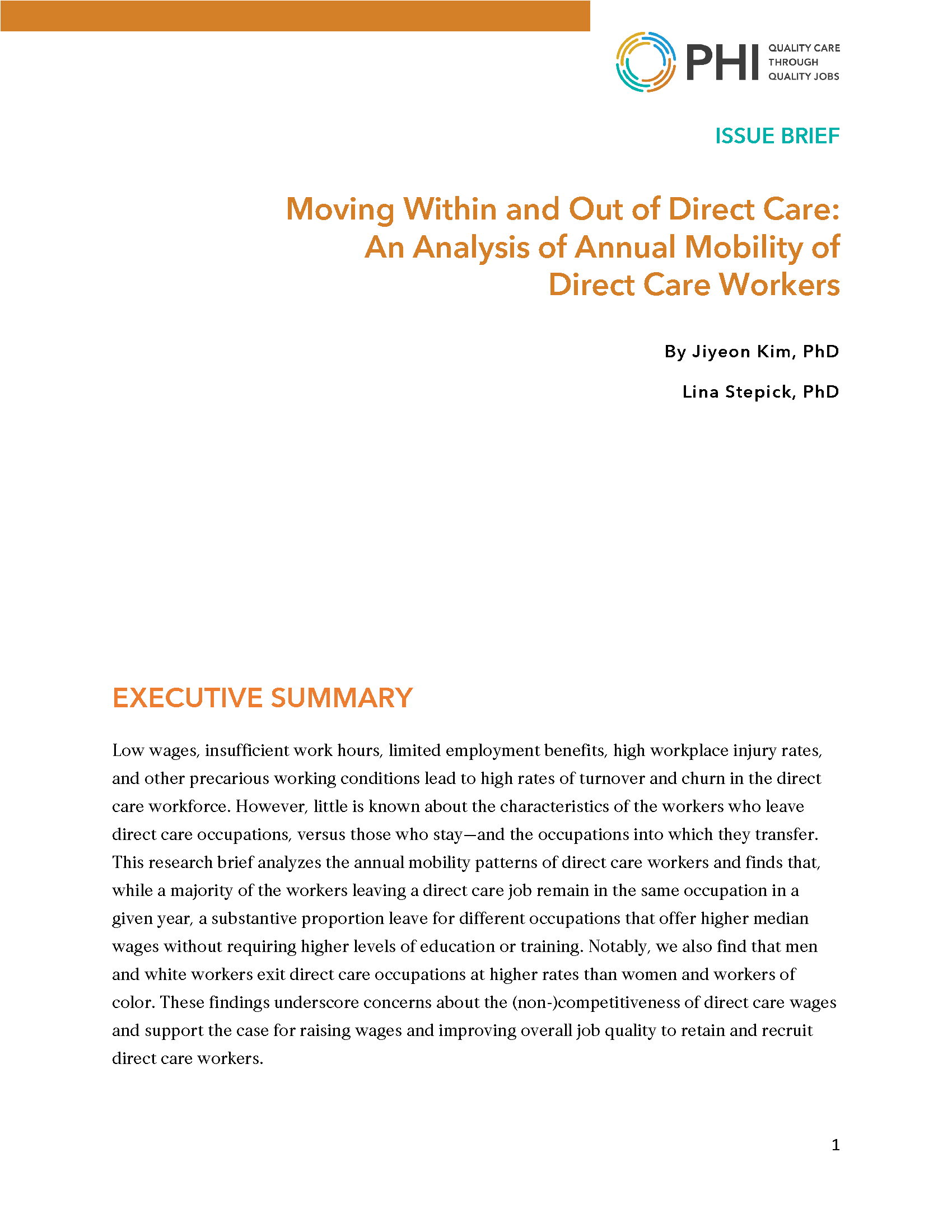Moving Within and Out of Direct Care: An Analysis of Annual Mobility of Direct Care Workers
 Low wages, insufficient work hours, limited employment benefits, high workplace injury rates, and other precarious working conditions lead to high rates of turnover and churn in the direct care workforce. However, little is known about the characteristics of the workers who leave direct care occupations, versus those who stay—and the occupations into which they transfer. This research brief analyzes the annual mobility patterns of direct care workers and finds that, while a majority of the workers leaving a direct care job remain in the same occupation in a given year, a substantive proportion leave for different occupations that offer higher median wages without requiring higher levels of education or training.
Low wages, insufficient work hours, limited employment benefits, high workplace injury rates, and other precarious working conditions lead to high rates of turnover and churn in the direct care workforce. However, little is known about the characteristics of the workers who leave direct care occupations, versus those who stay—and the occupations into which they transfer. This research brief analyzes the annual mobility patterns of direct care workers and finds that, while a majority of the workers leaving a direct care job remain in the same occupation in a given year, a substantive proportion leave for different occupations that offer higher median wages without requiring higher levels of education or training. Key Takeaways
Most direct care workers remain in the field year-to-year (81%), but those who leave typically go to higher-paying occupations. About 93% of workers who leave direct care transition to jobs with higher median wages, even though these new roles generally don't require higher education or training levels.
Demographics play a significant role in direct care worker mobility. Men and white workers exit direct care at higher rates than women and workers of color. Specifically, white men (11%) are most likely to leave for different occupations, while women of color (6%) are least likely to leave.
When direct care workers change careers, they predominantly stay in healthcare (65%), with medical assistant being the most common transition occupation (17%). This suggests workers are seeking similar roles with better compensation or working conditions rather than leaving the care sector entirely.

